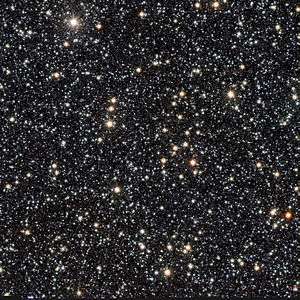Substellar object

A substellar object, sometimes called a substar, is an astronomical object whose mass is smaller than the smallest mass at which hydrogen fusion can be sustained (approximately 0.08 solar masses). This definition includes brown dwarfs, former stars similar to EF Eridani B, and can also include objects of planetary mass, regardless of their formation mechanism and whether or not they are associated with a primary star.[2][3][4][5]
Assuming that a substellar object has a composition similar to the Sun's and at least the mass of Jupiter (approximately 10−3 solar masses), its radius will be comparable to that of Jupiter (approximately 0.1 solar radii). Brown Dwarfs are less than 75 Jupiter masses, This is because the center of such a substellar object just below the hydrogen-burning limit is quite degenerate, with a density of ≈103 g/cm3, but this degeneracy lessens with decreasing mass until, at the mass of Jupiter, a substellar object has a central density less than 10 g/cm3. The density decrease balances the mass decrease, keeping the radius approximately constant.[6] Substars like Brown Dwarfs can live forever even though they do not have enough mass to fuse hydrogen and helium.
A substellar object with a mass just below the hydrogen-fusing limit may ignite hydrogen fusion temporarily at its center, although this will provide some energy, it will not be enough to overcome the object's ongoing gravitational contraction; likewise, although an object with mass above approximately 0.013 solar masses will be able to fuse deuterium for a time, this source of energy will be exhausted in approximately 106 to 108 years. Apart from these sources, the radiation of an isolated substellar object comes only from the release of its gravitational potential energy, which causes it to gradually cool and shrink. A substellar object in orbit about a star will shrink more slowly as it is kept warm by the star, evolving towards an equilibrium state where it emits as much energy as it receives from the star.[7]
Classification
William Duncan MacMillan proposed (1918) the classification of substellar objects into three categories based on their density and phase state: solid, transitional and dark (non-stellar) gaseous.[8] Solid objects include Earth, smaller terrestrial planets and moons; with Uranus and Neptune (as well as later mini-Neptune and Super Earth planets) as transitional objects between solid and gaseous. Saturn, Jupiter and large gas giant planets are in a fully "gaseous" state.
See also
References
- ↑ "New Cool Starlet in Our Backyard". ESO Picture of the Week. Retrieved 25 September 2013.
- ↑ §3, What Is a Planet?, Steven Soter, Astronomical Journal, 132, #6 (December 2006), pp. 2513–2519.
- ↑ pp. 337–338, Theory of Low-Mass Stars and Substellar Objects, Gilles Chabrier and Isabelle Baraffe, Annual Review of Astronomy and Astrophysics 38 (2000), pp. 337–377.
- ↑ Alula Australis, Jim Kaler, in Stars, a collection of web pages. Accessed on line September 17, 2007.
- ↑ A search for substellar members in the Praesepe and σ Orionis clusters, B. M. González-García, M. R. Zapatero Osorio, V. J. S. Béjar, G. Bihain, D. Barrado Y Navascués, J. A. Caballero, and M. Morales-Calderón, Astronomy and Astrophysics 460, #3 (December 2006), pp. 799–810.
- ↑ Chabrier and Baraffe, §2.1.1, 3.1.
- ↑ Chabrier and Baraffe, §4.1, Figures 6–8.
- ↑ MacMillan, W.D. 1918. On stellar evolution. Astrophys. J. 48: 35-49 DOI: 10.1086/142412 http://adsabs.harvard.edu/doi/10.1086/142412